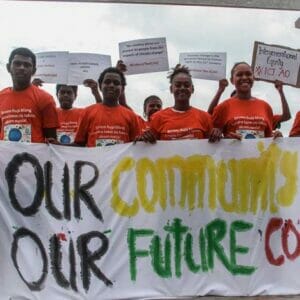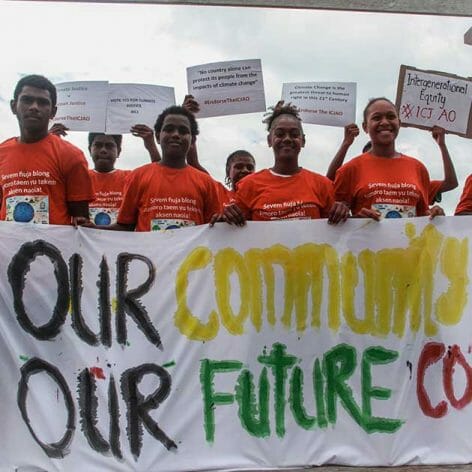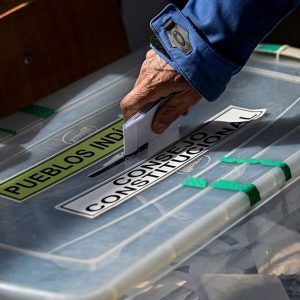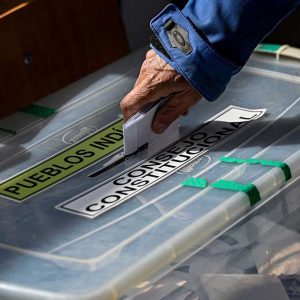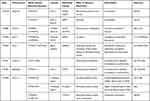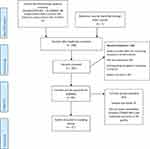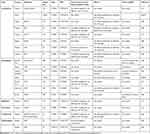
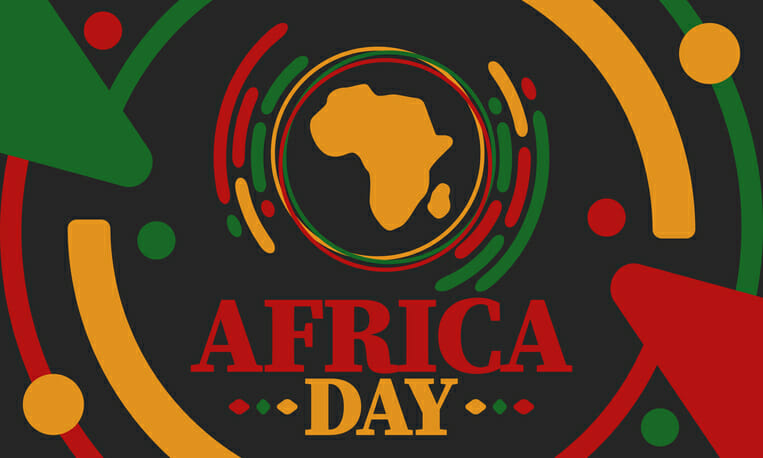
Source: Iuliia Pilipeichenko / Getty
May 25th is World Africa Day! Did you know there are 54 countries that make up the continent of Africa? Yes, each of these countries have their own history and culture that continue to change the world everyday.
Text “DCnews” to 52140 For Local & National News Sent Directly To You!
Below you will see a brief overview of each country and link to learn more about the entertainment, languages, food and so much!


Cabo Verde
Cabo Verde aka Cape Verde is pronounced “kaa·bow vehr·day” and is one of the 6 island nations in Western Africa. The name Cabo Verde means “green cape.” This country consists of 10 islands and gained its independence on July 5, 1975 from Portugal.
CLICK HERE To Learn More About Cabo Verde’s Music, Food, Languages, Places To Visit and More!
Comoros
Comoros is pronounced “kaa·mur·owz” and is one of the 6 island nations of Africa. The name Comoros is derived from the Arab word ‘kamar’ which means the moon. This country gained it’s independence on July 6, 1975 from France. This country is known as the perfume island.
CLICK HERE To Learn More About Cabo Verde’s Music, Food, Languages, Places To Visit and More!
Madagascar
Madagascar is pronounced “ma·duh·ga·skaar” and is one of the 6 island nations of Africa. This country gained it’s independence on June 26, 1960 from France. This country is known for their lemurs which are primitive relatives of monkeys. Continue reading below to learn more about the beautiful African country, Madagascar.
CLICK HERE To Learn More About Madagascar’s Music, Food, Languages, Places To Visit and More!
Mauritius
Mauritius is pronounced “mur·i·shuhs” and is one of the 6 island nations of Africa. This country gained its independence on March 12, 1968 from Britain. Mauritius is a island nation known for it’s beaches, lagoons and reefs with over 700 species of indigenous plants. This country is ranked as one of the best beach and honeymoon locations in the world.
CLICK HERE To Learn More About Mauritius’ Music, Food, Languages, Places To Visit and More!
São Tomé and Príncipe
The Democratic Republic of São Tomé and Príncipe is pronounced “sow toe·may and prin·see·pay” and and is one of the 6 island nations of Africa. This country is made of 2 islands; São Tomé received its name after being discovered by Portuguese explorers on St Thomas Day and Príncipe received its name as a shorter version of the original Portuguese name of “Ilha do Principe” which means Isle of the Prince. São Tomé and Príncipe gained its independence on July 12, 1975 from Portugal. This country is 2nd smallest African country and home to the world’s smallest bird, the ibis. It’s known as “The Africa Galápagos”.
Seychelles
Seychelles is pronounced “say·shelz” and is one of the 6 island nations of Africa. This country is made up of 115 islands in the Indian Ocean. Seychelles was named after Jean Moreau de Séchelles, Louis XV‘s Minister of Finance, in 1756 when the French set a Stone of Possession on the islands Mahé. This country gained its independence on June 29, 1976 from the British and is known as “the land of perpetual summer.”
CLICK HERE To Learn More About Seychelles’ Music, Food, Languages, Places To Visit and More!


Algeria
Algeria is pronounced “al·jee·ree·uh” and is one of the 6 countries located in North Africa. Algeria is the largest country in Africa and its name derived from the name of the city of Algiers. This country gained its independence on July 5, 1962.
CLICK HERE To Learn More About Algeria’s Music, Food, Languages, Places To Visit and More!
Egypt
Egypt is pronounced “ee·juhpt” and is one of the 6 countries located in North Africa. Egypt’s name means ‘Temple Of The Soul Of Ptah’ (Ptah is the creative god associated with Memphis, the ancient city of Egypt). This country gained its independence on February 28, 1922 from Britain. This country is known for having the oldest of all the pyramids, the Great Pyramid of Giza which is known for being one of the giant pyramids in the world.
CLICK HERE To Learn More About Egypt’s Music, Food, Languages, Places To Visit and More!
Libya
Libya is pronounced “li·bee·uh” and is one of the 6 countries located in North Africa. The name Libya derived from the Egyptian term Libu. This country gained its independence on December 24, 1951 from Italy. This country is known for containing some of the world’s most well-preserved ruins from ancient civilizations.
CLICK HERE To Learn More About Libya’s Music, Food, Languages, Places To Visit and More!
Morocco
Morocco is pronounced “mur·aa·co” and is one of the 6 countries located in North Africa. Morocco gained its independence on April 7, 1956 from France. This country was originally named Marrakesh from the Berber which means “land of God” or “sacred land”. This country is the home of the Sahara desert which is the world’s largest desert. Continue reading below to learn more about the beautiful African country, Morocco.
CLICK HERE To Learn More About Morocco’s Music, Food, Languages, Places To Visit and More!
Sudan
Sudan aka North Sudan is pronounced “sue·dan” and is one of the 6 countries located in North Africa. Sudan’s name derives from the Arabic bilad al-sudan, which means “land of the blacks.” This country gained its independence on January 1, 1956 from the United Kingdom and Egypt. As of 2012, according to the American Community Survey, there are 48,763 people of Sudan decent living in the United States. Continue reading below to learn more about the beautiful African country, Sudan.
CLICK HERE To Learn More About Sudan’s Music, Food, Languages, Places To Visit and More!
Tunisia
Tunisia is pronounced “too·nee·zhuh” and is one of the 6 countries located in North Africa. The name Tunisia means “to lay down” or “encampment”. This country gained its independence on March 20, 1956 from France and is known for its unique blend of Arab and Berber cultures and influence. According the 2022 census there are 24,735 Tunisian Americans in the United States.
CLICK HERE To Learn More About Tunisia’s Music, Food, Languages, Places To Visit and More!


Burundi
Burundi is pronounced “buh·roon·dee” and is one of the 10 countries located in East Africa. Burundi is named after the King of Burundi, who ruled the region starting in the 16th century This country gained it’s independence on July 1, 1962. This country is known as “The Heart of Africa”.
CLICK HERE To Learn More About Burundi’s Music, Food, Languages, Places To Visit and More!
Djibouti
Djibouti is pronounced “juh·boo·tee” and is one of the 10 countries located in East Africa. Djibouti means “boiling pot” in the Afar language based off its dry and hot weather all year. This country gained its independence on June 27, 1977 from France.
CLICK HERE To Learn More About Djibouti’s Music, Food, Languages, Places To Visit and More!
Eritrea
Eritrea is pronounced “air·uh·tree·uh” and is one of the 10 countries located in East Africa. The name Eritrea derives from the Greek term Sinus Erythraeus, which means Red Sea.This country gained its independence on May 24, 1991 from Ethiopia. This country is known for having one of the oldest port cities in Africa.
CLICK HERE To Learn More About Eritrea’s Music, Food, Languages, Places To Visit and More!
Ethiopia
Ethiopia is pronounced “ee·thee·ow·pee·uh” and and is one of the 10 countries located in East Africa. It is said that the name Ethiopia derived from the Greek Αἰθιοπία Aithiopia which means “of burnt ( αιθ-) visage (ὄψ)”. Ethiopia is the oldest independent country in Africa and one of the oldest in the world. This country is birth place of coffee.
CLICK HERE To Learn More About Ethiopia’s Music, Food, Languages, Places To Visit and More!
Kenya
Kenya is pronounced “ken·yuh” and is one of the 10 countries located in East Africa. This country is named after Mount Kenya or ‘Kirinyaga‘, the ‘Mountain of Whiteness’. Kenya gained its independence on December 12, 1963 from Britain. This country is known for being the world’s best safari destination.
CLICK HERE To Learn More About Kenya’s Music, Food, Languages, Places To Visit and More!
Rwanda
Rwanda is pronounced “ruh·waan·duh” and is one of the 10 countries located in East Africa. This country gained it’s independence on July 1, 1962. This country is known as ‘The Land of a Thousand Hills‘. Continue reading below to learn more about the beautiful African country, Rwanda.
CLICK HERE To Learn More About Rwanda’s Music, Food, Languages, Places To Visit and More!
Somalia
Somalia is pronounced “sow·maa·lee·uh” and is one of the 10 countries located in East Africa. The name Somalia comes from the indigenous Somali people. This country gained its independence on July 1, 1960 and is known as the ‘Horn of Africa’. As of 2022, there are about 300,000 people from Somalia that live in the United States according to VOA.
CLICK HERE To Learn More About Somalia’s Music, Food, Languages, Places To Visit and More!
South Sudan
South Sudan is pronounced “sowth soo·dan” and is one of the 10 countries located in East Africa. It is one of the newest countries of Africa receiving it’s name after it’s independence from Sudan. The name Sudan means derives from the Arabic bilad al-sudan, which means “land of the blacks.” This country gained its independence on July 9, 2011 from Sudan. As of 2007, according to former Ambassador Ezekiel Lol Gatkuoth, there are over 100,000 people of South Sudan decent living in the United States. Continue reading below to learn more about the beautiful African country, South Sudan.
CLICK HERE To Learn More About South Sudan’s Music, Food, Languages, Places To Visit and More!
Tanzania
Tanzania is pronounced “tan·zuh·nee·uh” or “tan·zawn·yuh“ and is one of the 10 countries located in East Africa. This country’s name is a combination of the first letters of Tanganyika and Zanzibar, which are the two states that merged to form Tanzania in 1964. This country gained its independence on December 9, 1961. As of 2020, there are about 73,000 people of Tanzanian decent that live in the United States.
CLICK HERE To Learn More About Tanzania’s Music, Food, Languages, Places To Visit and More!
Uganda
Uganda is pronounced “you·gaan·duh” and and is one of the 10 countries located in East Africa. Uganda got it’s name from the Buganda kingdom. This country gained its independence on October 9, 1962 from England and is known as ‘The Pearl of Africa’. As of 2014, there are 20,248 Ugandan Americans in the United States.
CLICK HERE To Learn More About Uganda’s Music, Food, Languages, Places To Visit and More!


Angola
Angola is pronounced “ang·gow·luh” and and is one of the 9 countries located in Central Africa. This country gained its independence on November 11, 1975 from Portugal.
CLICK HERE To Learn More About Angola’s Music, Food, Languages, Places To Visit and More!
Cameroon
Cameroon is pronounced “ka·mur·oon” and is one of the 9 countries located in Central Africa. Has the longest ruling leader, Paul Biya. Cameroon was named by Portuguese explorers for the Rio dos Camarões (‘River of Prawns’). This country gained it’s independence on October 1, 1961 from France.
CLICK HERE To Learn More About Cameroon’s Music, Food, Languages, Places To Visit and More!
Central African Republic
Central African Republic is pronounced “sen·truhl a·fruh·kuhn ruh·puh·bluhk” and is one of the 9 countries located in Central Africa. This country gained it’s independence on August 13, 1960. This country is known to have the world’s 2nd largest rainforest, The Congo Basin and home to the ethnic group of the PeeWee People. The PeeWee People are known for their short stature typically under 5 feet tall.
Chad
Chad is pronounced “ch·ad” and and is one of the 9 countries located in Central Africa. The largest landlocked country in Africa. This country gained its independence on August 11, 1960. This country was named after Lake Chad.
CLICK HERE To Learn More About Chad’s Music, Food, Languages, Places To Visit and More!
Republic of the Congo
Republic of the Congo aka Congo is pronounced “kaang·gow” and and is one of the 9 countries located in Central Africa. The name Congo is from the Congo River which derived from Kongo, a Bantu kingdom that got its name from its people, the Bakongo (hunters). This country gained its independence in 1960 from France. This country is also known as Middle Congo, Congo-Brazzaville, and Congo.
Democratic Republic of the Congo
Democratic Republic of the Congo aka DR Congo is pronounced “kaang·gow” and and is one of the 9 countries located in Central Africa. DR Congo is the 2nd largest country in Africa after Algeria. The name Congo is from the Congo River which derived from Kongo, a Bantu kingdom that got its name from its people, the Bakongo (hunters). This country gained it’s independence on June 30, 1960 from Belgium.
Equatorial Guinea
Equatorial Guinea is pronounced “eh·kwuh·taw·ree·uhl gi·nee” and is one of the 9 countries located in Central Africa. Equatorial Guinea was formally the Spanish Guinea. This country is along the Gulf of Guinea in the Guinea region of West Africa and lies right above the Equator, which is what “equatorial” refers to. This country gained its independence on October 12, 1968 from Spain. Equatorial Guinea is the only African country with Spanish as its official language.
CLICK HERE To Learn More About Equatorial Guinea‘s Music, Food, Languages, Places To Visit and More!
Gabon
Gabon is pronounced “ga·bone” and and is one of the 9 countries located in Central Africa. Gabon was named after the Portuguese word gabão and this country’s official name is the Gabonese Republic. This country gained its independence on August 17, 1960 from France. In 2021 there were only 131 people from Gabon in the United States.
CLICK HERE To Learn More About Gabon’s Music, Food, Languages, Places To Visit and More!


Botswana
Botswana is pronounced “baat·swaa·nuh” and is one of the 9 countries located in Southern Africa. Botswana means “Land of the Tswana.” This country gained its independence on September 30, 1966. Botswana is known for being the home to the world’s largest concentration of African Elephants plus the world’s second largest gem quality diamond was discovered here in 2021.
CLICK HERE To Learn More About Botswana’s Music, Food, Languages, Places To Visit and More!
Eswatini
Eswatini aka Swaziland is pronounced “eh·swaa·tea·nee” and is one of the 9 countries located in Southern Africa. This country gained its independence on September 6, 1968 from Britain. The Kingdom of Eswatini is one of the three remaining kingdoms in the continent of Africa. This country is landlocked inside the country of South Africa.
CLICK HERE To Learn More About Eswatini’s Music, Food, Languages, Places To Visit and More!
Lesotho
Lesotho is pronounced “luh·sue·too” and landlocked in South Africa. Lesotho’s name means “land of the Sotho.” The Sotho people are a Bantu nation native to southern Africa, they are also known as the Basuto or Basotho. Lesotho gained its independence on October 4, 1966 from Great Britain. This country is one of the three remaining Kingdoms on the continent of Africa and is one of 3 enclaved countries in the world (Enclaved countries are those completely surrounded by another country’s land).
CLICK HERE To Learn More About Lesotho’s Music, Food, Languages, Places To Visit and More!
Malawi
Malawi is pronounced “muh·laa·wee” and is one of the 13 countries located in Southern Africa. The name Malawi means “flaming waters” and was taken from a tribal word that described how rays of sun glinted off Lake Nyasa. This country gained its independence on July 6, 1964 from Britain. This country is known for Lake Malawi which is the home to the largest number of fish species of any lake in the world.
CLICK HERE To Learn More About Malawi’s Music, Food, Languages, Places To Visit and More!
Mozambique
Mozambique is pronounced “mow·zam·beek” and is one of the 9 countries located in Southern Africa. This countries original name by the Portuguese was Moçambique after the Island of Mozambique. It derived from Mussa Bin Bique or Mussa Ibn Malik who was an Arab trader who allegedly first visited the island. This country gained its independence on June 25, 1975 from Portugal.
CLICK HERE To Learn More About Mozambique’s Music, Food, Languages, Places To Visit and More!
Namibia
Namibia is pronounced “nuh·mi·bee·uh” and is one of the 9 countries located in Southern Africa. This country gained its independence on March 21, 1990 from South Africa. This country is known for one of the world’s most extensive meteorite showers. The Gibeon Meteorite Shower is the largest known meteorite shower on Earth. Continue reading below to learn more about the beautiful African country, Namibia.
CLICK HERE To Learn More About Namibia’s Music, Food, Languages, Places To Visit and More!
South Africa
South Africa is pronounced “sowth a·fruh·kuh” and is one of the 9 countries located in Southern Africa. This country got its name because of it’s location at the southern tip of Africa. This country is known for its abundant wildlife. According to the American Community Survey, as of 2021 there are 123,461 people from South Africa that live in the United States.
CLICK HERE To Learn More About South Africa’s Music, Food, Languages, Places To Visit and More!
Zambia
Zambia is pronounced “zam·bee·uh” and is one of the 9 countries located in Southern Africa. The name Zambia derived from the Zambezi river which means “River of God.” This country gained its independence on October 24, 1964 from Britain.
CLICK HERE To Learn More About Zambia’s Music, Food, Languages, Places To Visit and More!
Zimbabwe
Zimbabwe is pronounced “zim·baab·way” and is one of the 9 countries located in Southern Africa. The name Zimbabwe means Great House of Stone. This country gained its independence on April 18, 1980 from Great Britain and is known as the “Jewel of Africa”. As of 2017, there are about 30,000 Zimbabweans that live in the United States.
CLICK HERE To Learn More About Zimbabwe’s Music, Food, Languages, Places To Visit and More!


Benin
Benin is pronounced “buh·neen” and is one of the 16 countries located in West Africa. This country gained its independence on August 1, 1960.
CLICK HERE To Learn More About Benin’s Music, Food, Languages, Places To Visit and More!
Burkina Faso
Burkina Faso is pronounced “bur·kee·nuh faa·sow” and is one of the 16 countries located in West Africa. The name Burkina Faso means “Land of Incorruptible People”. This country gained its independence on August 5, 1960.
CLICK HERE To Learn More About The Burkina Faso’s Music, Food, Languages, Places To Visit and More!
Côte d’Ivoire
Côte d’Ivoire aka Ivory Coast is pronounced “coat duh·vwaar” and is one of the 16 countries located in West Africa. This country gained it’s independence on August 7, 1960 from France. This country is known for being the world’s top exporter of cocoa and raw cashew nuts.
CLICK HERE To Learn More About The Côte d’Ivoire’s Music, Food, Languages, Places To Visit and More!
The Gambia
The Gambia is pronounced “gam·bee·uh” and is one of the 16 countries located in West Africa. The Gambia was named after ‘The River Gambia.’ This country gained its independence on February 18, 1965 from Britain. This country is known as a birdwatcher’s paradise with over 500 species of birds who call The Gambia home.
CLICK HERE To Learn More About The Gambia’s Music, Food, Languages, Places To Visit and More!
Ghana
Ghana is pronounced “gaa·nuh” and is one of the 16 countries located in West Africa. The name Ghana means “king.” This country gained its independence on March 6, 1957 from Britain. Ghana was the first sub-Saharan African country to gain independence from colonial rule. As of 2015, there are more than 235,000 people of Ghanian decent that live in the United States.
CLICK HERE To Learn More About Ghana’s Music, Food, Languages, Places To Visit and More!
Guinea
Guinea is pronounced “gi·nee” and is one of the 16 countries located in West Africa. Guinea means “land of the blacks.” This country gained its independence on October 2, 1958 from France.
CLICK HERE To Learn More About Guinea’s Music, Food, Languages, Places To Visit and More!
Guinea-Bissau
Guinea-Bissau is pronounced “gi·nee buh·sau” and is one of the 16 countries located in West Africa. The name Guinea means “the land of the blacks” and “Bissau” is the name of the capital. Guinea-Bissau gained its independence on September 24, 1973 from Portugal. This country is known as being one of the top cashew producers in the world.
CLICK HERE To Learn More About Guinea-Bissau’s Music, Food, Languages, Places To Visit and More!
Liberia
Liberia is pronounced “lai·bee·ree·uh“ and is one of the 16 countries located in West Africa. This country gained its independence on July 26, 1847 from the American Colonization Society. Liberia has never subjected to colonial rule and is Africa’s oldest republic. Its name means “land of freedom” referring to its settlement in the early 1800s by freeborn and former enslaved Black Americans.
CLICK HERE To Learn More About Liberia’s Music, Food, Languages, Places To Visit and More!
Mali
Mali is pronounced “maa·lee” and is one of the 16 countries located in West Africa. Mali is named after the Mali Empire and means “the place where the king lives.” This country gained it’s independence on September 22, 1960 from France.
CLICK HERE To Learn More About Mali’s Music, Food, Languages, Places To Visit and More!
Mauritania
Mauritania is pronounced “more·uh·tay·nee·uh” and is one of the 16 countries located in West Africa. This country gained its independence on November 28, 1960 from France. Mauritania was the last country in the world to abolish slavery in 1981. The name Mauritania derived from the Latin word Mauretania which means “west.” .
CLICK HERE To Learn More About Mauritania’s Music, Food, Languages, Places To Visit and More!
Niger
Niger is pronounced “n·eye·jer” and is one of the 16 countries located in West Africa. Niger was named after the Niger River that flows through the country and means ‘flowing water’ in Tuareg n’eghirren. This country gained its independence on August 3, 1960 from France. Niger is home to the largest protected area in Africa.
CLICK HERE To Learn More About Niger’s Music, Food, Languages, Places To Visit and More!
Nigeria
Nigeria is pronounced “nai·jee·ree·uh” and is one of the 16 countries located in West Africa. The name Nigeria is taken from the Niger River running through the country. This country gained its independence on Oct 1, 1960 from Britain. This country is known as the “Giant of Africa”. As of 2016, according to the American Community Survey there were about 380,785 people of Nigerian decent that live in the United States.
CLICK HERE To Learn More About Nigeria’s Music, Food, Languages, Places To Visit and More!
Senegal
Sengal/Sénégal is pronounced “seh·nuh·gaal” and is one of the 16 countries located in West Africa. Sénégal’s Independence Day is August 20, 1960. As of 2019, there are 18,091 people from Senegal that live in the United States.
CLICK HERE To Learn More About Senegal’s Music, Food, Languages, Places To Visit and More!
Sierra Leone
Sierra Leone is pronounced “see·eh·ruh lee·own” and is one of the 16 countries located in West Africa. The name Sierra Leone means “lion mountains”. This country gained it’s independence on April 27, 1961 from Britain. According to American Community Survey, there are 34,161 people from Sierra Leone that live in the United States.
CLICK HERE To Learn More About Sierra Leone’s Music, Food, Languages, Places To Visit and More!
Togo
Togo is pronounced “toe·go” and is one of the 16 countries located in West Africa. The name Togo is translated from the Ewe language as “behind the river”. This country gained its independence on April 27, 1960 from France and is known as “land where lagoons lie”. According to the 2021 census there are around 16,000 Togolese-born individualsthat live in the United States.
CLICK HERE To Learn More About Togo’s Music, Food, Languages, Places To Visit and More!
Get Breaking News & Exclusive Contest in Your Inbox:
READ MORE WORLD NEWS:
Happy World Africa Day! Learn About The 54 Countries of Africa was originally published on woldcnews.com

